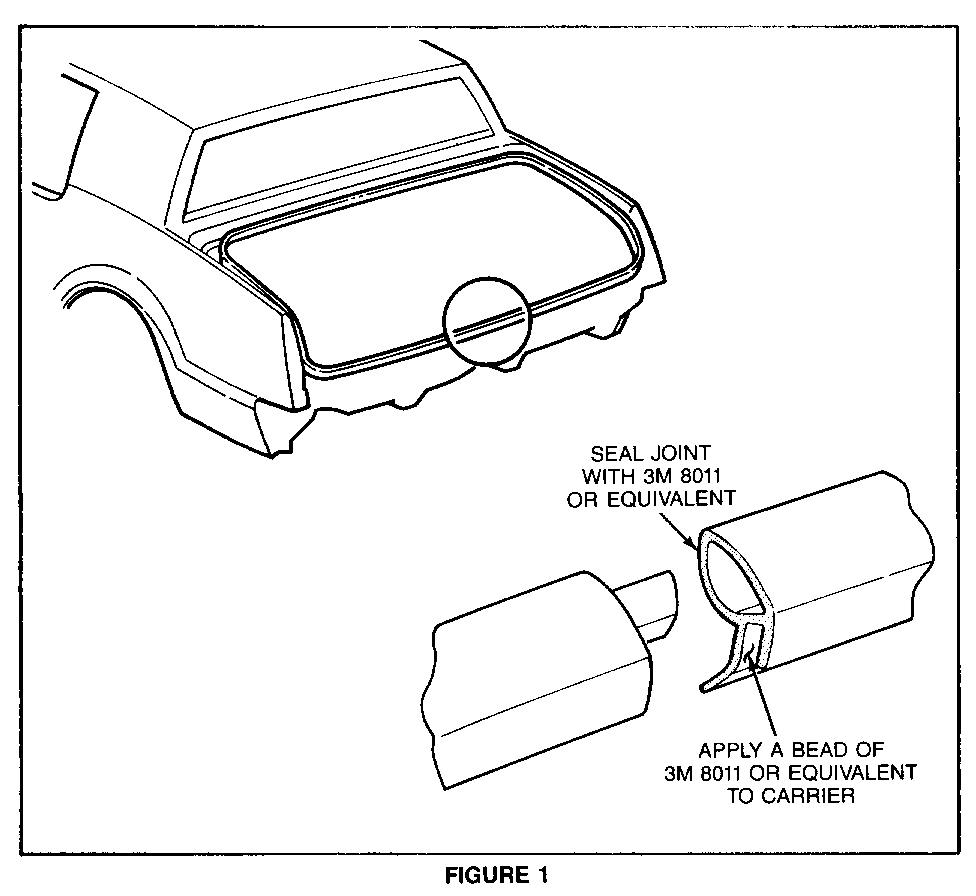REAR COMPART. WEATHER STRIP 002R-OUT SERVICE REPLACEMENTS

REAR COMPARTMENT WEATHERSTRIP OOZE-OUT SERVICE REPLACEMENTS 1981-1983 DEVILLES, BROUGHAMS, LIMOUSINES AND ELDORADOS
A new sealerless deck lid weatherstrip (P/N 20469449) has been released for service only and should be used when correcting conditions of deck lid weatherstrip sealer ooze-out.
The new weatherstrip does not require sealer in the carrier. Only one length of the new weatherstrip will be available for service, therefore, replacement will include a cut to fit operation.
Should it become necessary to replace a rear compartment lid weatherstrip, the following procedure should be followed:
Replacement Procedure: Rear Compartment Lid Weatherstrip
1. Remove lid weatherstrip and clean all sealer from flange around entire lid opening.
2. Begin inserting middle of new weatherstrip onto gutter flange at the center of the opening between hinges. Be sure weatherstrip is completely seated to flange around entire opening.
3. Cut off any extra material and cement butt ends together using 3M 8011 Black Weatherstrip Adhesive or equivalent.
4. Close lid and water test complete lid area.
5. Open lid and check for leak areas.
6. If leaks occur, remove weatherstrip from flange:
a. Brush 3M 8011 Black Weatherstrip Adhesive or equivalent on both sides of the flange completely around opening.
b. Apply a bead of 3M 8011 or equivalent into the new weatherstrip carrier (Figure 1). Allow to dry until adhesive becomes tacky (approximately five minutes).
c. Install new weatherstrip to flange and allow a minimum of three hours before closing lid.
7. Close lid and retest for water leaks. If water leaks are found, apply additional 3M 8011 or equivalent under weatherstrip outer lip.
For warranty purposes, use Operation No. T0077 at .6 hour.

General Motors bulletins are intended for use by professional technicians, not a "do-it-yourselfer". They are written to inform those technicians of conditions that may occur on some vehicles, or to provide information that could assist in the proper service of a vehicle. Properly trained technicians have the equipment, tools, safety instructions and know-how to do a job properly and safely. If a condition is described, do not assume that the bulletin applies to your vehicle, or that your vehicle will have that condition. See a General Motors dealer servicing your brand of General Motors vehicle for information on whether your vehicle may benefit from the information.
